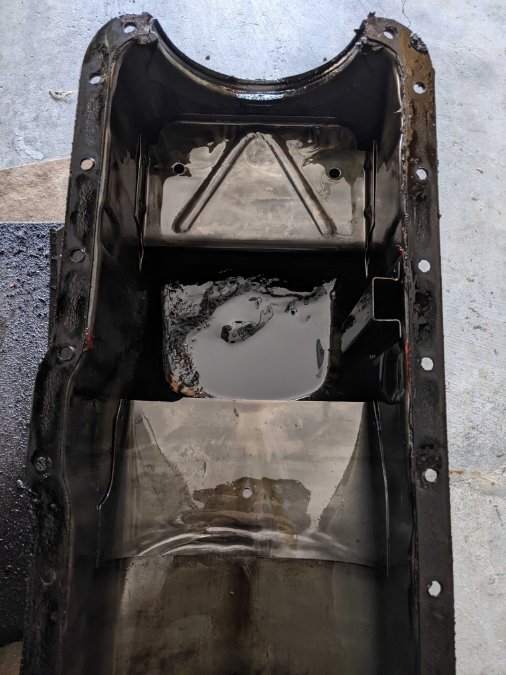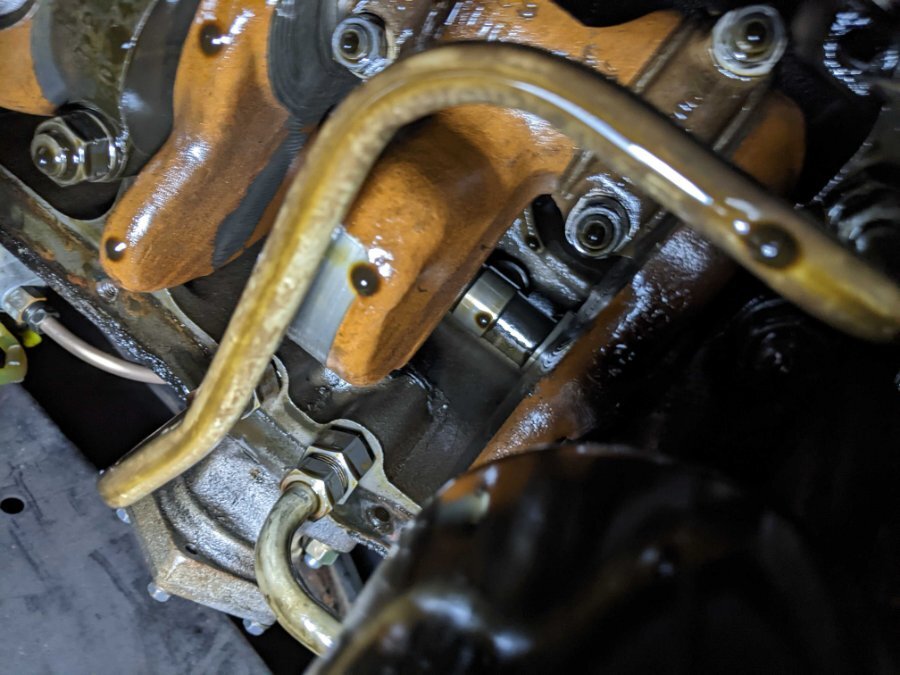
Ivan_B
Members-
Posts
1,206 -
Joined
-
Last visited
-
Days Won
13
Everything posted by Ivan_B
-
I assume you are referring to the 38? The manual actually shows them inserted my way, page 108, 1942 diagram. Maybe it used to be the other way around on the older models? 🤔 I took the oil pan down to the DIY car-wash, to give it a good rinse, and that did not work-out so well. Instead of rinsing off the goo at the bottom, I pushed it all over the place. Now that I think of it, I recall having a very similar experience the last time I tried to de-grease engine parts at a local car-wash 🙄 So it looks like I'll have to hot tank it, now. I could use a large trash can around the house, but was not planning for this quick repair to get this complicated 🥲
-
Typical sunk-cost fallacy example, in my opinion, as applied to practical everyday situations. And many people encourage it, for various reasons. Don't give up, they say... It's a great learning experience, they say (yeah, right, of what not to do)... Given the circumstances, this car was likely a mistake in the first place. As mentioned, I had one just like it, many years ago back in college. I was lucky-enough to quickly realize that it was not at all what I expected, and get rid of it until it became a major trouble. I agree. And people would find an excuse for everything: well, at least I had so much fun; I had such a great learning experience; I did it all by myself, and so forth 🙄 Cooper, are you working or still in school? Many retired fellas are really happy to spend their days in the garage with great aspirations, that's all. They are in a different situation in life. Some of those projects go on for decades and are later passed on as an unwanted inheritance, which the relatives have to dispose off. Don't you have other, more important things to do? Keith Did an engine rebuild, on the tube. Ask him how much time and money it took. If you get an old engine, odds are, it will be in similar condition as your current one. This is the last time I am saying this, I promise , but until you got too deep into this mess, get rid of it, save some money, and get another car which you can readily enjoy. Let someone else, who has the proper means, etc., to work with this one.
-
1950 Chevrolet Other Pickups
Ivan_B replied to jameshanks's topic in Ebay, Craigslist and External Site Referrals
Is this supposed to be a sliding pin, or is this a dual piston caliper setup? Something does not look right, here 🤨 -
I would suggest a more balanced approach. Trying to save a few $ by attempting to make something out of sticks and dirt might be counterproductive in relation to the original objectives. Time and labor are very valuable. In fact, this is the main production resource\asses for the overwhelming majority of the population. Instead of using it unproductively, attempting to do something one is not capable of, we can always sell it on the market and generate some income to pay others to do things for us that we cannot do ourselves. Back to the original topic: a more modern V8 + transmission + driveshaft + rear end (if available cheap and local) could be a more realistic scenario, assuming that you can safely fit it into the car. Although, I still would not recommend it.
-
+1; I would not consider swapping one old engine with a different but also old engine, given the overall circumstances of this project. One of those working OEM engines for sale on the forum might still be available.
-
I am doing some maintenance, and thought I'd share some good things. Removed the oil pan, today, for cleaning and gasket replacement. The engine insides look great, almost no sludge; some sediment at the bottom of the pan but not too much. The pan has definitely been down before. One of the screws was missing the split washer, and one of the flywheel studs is not sitting correctly. Why would anyone do something like that? The studs have a flat spot for a reason... 🙄 Also, the pan gasket is rubber (not original) while the valve covers still had the fossilized cork. I was a bit concerned about the pan not clearing the steering rod, but it did.
-
Isn't the one available for loan from a local parts store going to work? The easiest fist would be a direct OEM replacement, for sure
-
Seriously? For a 50-s engine with no repairs - it is probably done. Very sorry to hear that. I am just curious, how much did you pay for this car, $2-3k?
-
What kind of prep work was done on those parts, before painting?
-
Since TS ordered another one, let's try to crush this one in a press to see if anything comes out
-
Ok, still no leaks, I assume?
-
I was also under impression that softer metals are usually used for such applications where there is not much lubrication and sliding friction involved. How's steel expected to work? Wouldn't it either eat away the input shaft of the crankshaft side? 🤔
-
Yep, I figured that with the expense of "small production" labor, getting a new/re-manufactured one would cost very comparatively I am still using the stock ones, with 50k on them. Hopefully, these will last a while.
-
The likely culprit of what? The carb could cause a no-start, a flood, rich or lean running condition. What you've described in the first post does not seem to fit here 🤔 I might be in SJ in July, maybe we'll figure this out together 😅
-
Did you figure out how it broke off? Seriously, no way that pushing on the rivets (essentially the hub) would break the cylinder off. Maybe it was just a coincident? The new drum looks bad... Probably out of specs if you resurface it to a reasonable degree... I was thinking, maybe there is a way to adapt some modern drums to the hub? Or, sleeve the old drum? Some "modern" cars use an aluminum alloy drum with a steel/iron sleeve inside. I was very skeptical of this, when I first saw it, but it works. So I suspect that sleeving the old iron drum might work too 🤔 Later: this guy did a motorcycle hub: Do you have an industrial lathe around? 😅
-
That looks like a hydro-vacuum unit.
-
I've read the instructions completely, there is no info about operation principle. It just states at the end that the pedal might feel softer and have more travel If @Plymouthy Adams is correct in his assumption, I suspect that this operates as an additional cylinder, effectively changing the "leverage" in the existing system. I also saw the eBay listing. 150 is a bit high for an experiment, but if someone is willing to split the cost, I'd take one @Loren Are you in, on this?
-
Hmm, something like dual lever metal cutting scissors, where they play with two shorter levers instead of a single big one? 🤔 Have you ever used these brakes? Do they provide noticeable boost? How about not getting stuck in the applied position?
-
I am not finding any information about a "stand-alone" (no vacuum, no pump, no electricity) hydraulic brakes. Come on, how do they work? Something silly like pumping the pedal 50 times in advance to build-up pressure? 🤣
-
Very good. Did you also measure the input shaft tip? I am just curious because it looked dead to me. Does not count, sorry 😂 Is that fully assembled, under load, or still without the rear-end connected?
-
I suspect that if it was that simple, we could just play with the volume difference between the master and slave cylinders or, even simpler, just use a longer lever at the pedal... 😅 I am, now, curious, I'll look it up. Maybe I should get myself one of these too, after I go over the brakes 🤔
-
What kind of troubleshooting have you done so far, to determine that it is not charging?
-
There are probably some o-rings inside, which could use replacing, but that's not as bad as a 50-years old diaphragm So, this is not a hydro-vacuum unit? How does it work, where is it getting the extra power from? Modern versions attach to the power steering, or use electric power, etc. I cannot find any details on it. The instructions indicate that it connects instead of the master cylinder end cap.
-
This is exactly the kind of vintage solutions I was referring to. How old is it? Are there rubber parts inside?





